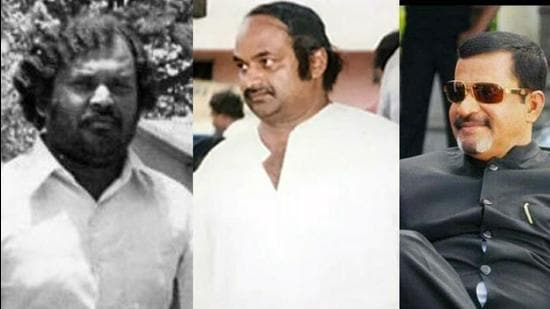Gangs of Bengaluru: The bloody history of gang wars in licence raj era
The void created by Jayaraj’s arrest was filled by one of his old mates and a former navy sailor, Ramachandra Rao alias Kotwal Ramachandra. With Jayaraj in jail, Kotwal grew closer to the political masters.
Bengaluru: On the morning of 25 January 1977, Gopi Thigalarpete, a wanted rowdy, was on his way to appear before a city court in Bengaluru. As soon as he entered the premises of the court number 2, a man, flanked with a dozen armed persons, approached him while concealing a sword under the shawl. In a matter of seconds, the gang brutally attacked Gopi, who ran inside the courtroom to take cover.

Though Gopi survived the attack and later recorded his statement with police, the case was one of the rarest occasions where a judge became the complainant.
The man involved in the murder attempt was identified as Jayaraj P, a criminal who is often acknowledged as the first don of Bengaluru.
In her 2017 book ‘Bhais of Bengaluru’ (loosely translated as goons of Bengaluru), journalist Jyoti Shelar highlights how criminal gangs wreaked terror in several parts of the city. According to police, it was Jayaraj, a former employee of the Hindustan Aeronautical Limited (HAL), who started an organised underworld in the city.
After being fired from HAL for skipping work, Jayaraj, who was also a bodybuilder, took to extortion as his next career option. His fate in the crime world took a leap, when D Nataraj, the son-in-law of former two-term chief minister D Devaraj Urs, took him under his wing.
Also Read: Gangs of Bengaluru: How IT boom changed the face of gang wars
“Nataraj, in a press statement, had once said that he wanted to model Indira Brigade on the lines of Komitet Gosudarstvennoy Bezopasnosti (KGB)—the main security agency of the erstwhile Soviet Union. Nataraj envisioned Indira Brigade would function like a powerful and robust intelligence unit. The main aim of the brigade was to protect Indira Gandhi,” Shelar writes in her book.
Jayaraj soon became the leader of the Indira Brigade, which, police say, was nothing but a gang of goons protected by some leaders of the ruling dispensation. “They were just goondas, who were at the disposal of Nataraj and chief minister Urs to be used as muscle for the political work. They started by harassing and looting couples at parks, but with political backing, they graduated to extortion, and most of them had attempt to murder or assault cases against them. The fear they created worked in the favour of the ruling party,” said a retired senior police officer, who didn’t wish to be named.
Retired assistant commissioner of police BB Ashok Kumar said the gang was so notorious that they had their own torture rooms. “When we raided Jayaraj’s house in Wilson Garden once, we found a torture room in his backyard garage. In another instance, a police inspector of Wilson Garden was trying to trace Jayaraj, who had threatened him in the police station. He even kept a sword in front of the officer to scare him,” the retired officer recounted.
However, his reign came to an end, with the murder attempt in the court premises. Soon after the attack in court, Jayaraj went into hiding, taking shelters in houses of several politicians. Around this time, Jayaraj also had a fallout with Nataraj, according to police officials.
With Judge Chandrasekaraya’s testimony against Jayaraj, he was sentenced to 10-year imprisonment in 1979.
The void created by Jayaraj’s arrest was filled by one of his old mates and a former navy sailor, Ramachandra Rao alias Kotwal Ramachandra. With Jayaraj in jail, Kotwal grew closer to the political masters. “He was a perverted character. He dressed well but he enjoyed harassing couples at parks. But over time, he took over Jayaraj’s extortion business and all the haftas (extortion money) paid to him. He was as intimidating as Jayaraj to the businessmen in the city,” said the retired officer.
Jayaraj tried to control the extortion business from the prison and even sent his men around the city to ensure his presence was felt. However, Kotwal was simultaneously expanding his reach in the city.
In 1984, after serving a reduced sentence of five years, Jayaraj came out of prison. Realising that Kotwal had taken over his empire, Jayaraj ordered attacks on Kotwal’s gang to send a strong message. After the battle for supremacy, which continued for over two years, on January 3, 1986, a compromise meeting was arranged between the two gangs. But instead of a compromise, Kotwal attempted to murder Jayaraj during that meeting. But the assassination attempt failed.
Two months later, on March 22, 1986, Kotwal was hacked to death.
Kotwal’s murder has been recounted in detail by one of the killers, Agni Sreedhar, a civil service aspirant-turned criminal, in his memoir, My Days in the Underworld—Rise of the Bangalore Mafia. Agni and his associates, Bachchan and Seetharam Shetty, were small-time criminals involved in intimidation and other minor crimes.
In the book, he writes how Jayaraj approached him to execute Kotwal. Agni also writes how he made it clear to Jayaraj that the latter’s grouse against Kotwal was personal and that under no circumstances should his name be linked to the murder and the underworld. Jayaraj was ready to face murder charges as it would earn him the reputation of being the city’s most dreaded criminal. Finally, along with associates Bachchan and Shetty, Agni killed Kotwal in his sleep, at the latter’s farmhouse.
Jayaraj and his men burned Kotwal’s body after the murder. In his book, Agni describes the murder by recounting Shetty’s statement to the police after he was arrested, three months later: “When the moon went behind the clouds, I looked at everyone. They all nodded. I hit Kotwal on the head with a machete. Bachchan landed blows to his neck and head. Sreedhar struck with a nunchaku. Kotwal died without offering resistance.”
Following Shetty’s statement, police arrested Agni, Bachchan and Jayaraj in 1986. Agni and his associates served a jail term of 20 months under trial, before finally being released due to lack of evidence.
Meanwhile, Jayaraj, who also came out of the jail on bail, realised that his power over the city had reduced over time. Police had by now cracked down on his gang, which opened an opportunity for another don to takeover Bengaluru’s underworld’s mantle.
This time, the void was filled by Muthappa Rai, who worked as a clerk in the Vijaya Bank in Bengaluru. Although a clerk by title, he was involved in the loan recovery for the bank. During this time, he made contact with other criminals in the city and eventually got the job of managing a bar on Bengaluru’s MG Road, which was frequented by goons in the city. He managed to keep the bar from losing business and kept the local goons away, with help of a gang he recruited from his hometown in Dakshin Kannada district. The bar was eventually sold to Rai, who then emerged as the main don in the city.
However, Jayaraj was still around. “Rai knew that taking Jayaraj out would make him the don of Bengaluru. He knew the risk involved, so he got in touch with his Mumbai contacts to arrange for firearms. They attacked him in front of the central jail in Bengaluru once and in a hospital another time. In both cases, Jayaraj escaped. During this time, Jayaraj decided to contest elections to gain more power, which made Rai and the gang desperate,” said the retired police officer, who didn’t want to be named.
On 21 November 1989, one day before he would go to jail in the murder case, Jayaraj was returning from Siddapura police station after signing the register, as per the court’s order. Around 7.20 am, his car was waylaid, and he was shot dead. The attack was led by Rai and three shooters who were roped in from underworld don Dawood Ibrahim’s gang from Mumbai.
“Rai went into hiding after the attack, but it had made him don of Bengaluru. Rai was ambitious and authoritarian. He wanted to be the sole power centre in Bengaluru and a one-point contact. Bengaluru had several smaller groups of rowdies, who had earlier owed allegiance to Kotwal and Jayaraj. All these groups were now under Rai, and Sreedhar played the middleman as he had more ground-level contacts,” Shelar, writes in her book.
In the beginning of 1990s, liberalisation opened up new opportunities for Bengaluru in the global economy. Around the time, Bengaluru police started major crackdown on various criminal elements and activities in the city. On 12 April 1993, Rai was shot in front of a city civic court, but he managed to escape. He later claimed that police had orchestrated the attack, only for the police to deny the accusation. After getting bail and realising his life was in danger, Rai fled to Dubai.
When chief minister HD Deve Gowda pitched for ‘Brand Bengaluru’ to the world during his trip to Davos for the World Economic Forum in 1995, police intensified their crackdown on gangs in the city, to change the recent bloodied history of Bengaluru.
While various gangs continued to thrive in the city even in the post-liberalisation era, the gang rivalries spilling out on the streets of Bengaluru were controlled to a large extent in the city for the sake of the IT boom, but more on that in the second part of this two-part series.
Part II: How IT boom changed the face of Bengaluru’s gang wars.
Get Current Updates on India News, Ram Navami Live Updates , Lok Sabha Election 2024 live, Elections 2024, Election 2024 Date along with Latest News and Top Headlines from India and around the world.




